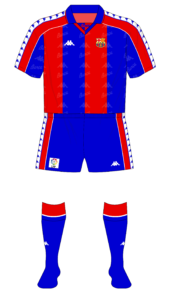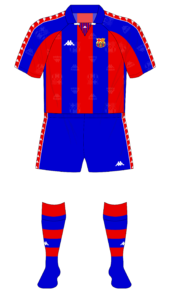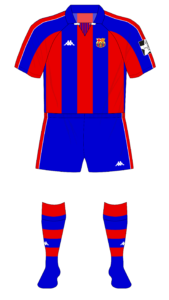Museum of Jerseys’ last article for RB – CSJ looked at the multitude of different shirts worn by Bayern Munich on their way to the 1987 European Cup final, but there appeared to be no grand plan on the kit-front bar adidas trying out new designs before diffusing them to their wider roster.
However, the 1990s signalled a sea-change as kit-makers and clubs became more commercially aware. Third strips became more of a thing and so too did ‘alternative home’ shirts, reserved for cup competitions or just games in Europe.
Napoli (1990-91)
First out of the blocks were Napoli in 1990-91, albeit with a short-lived offering. Having won Serie A for the second time, they released a new blue shirt with white swirls intended to grace a long European Cup campaign as well as the Coppa Italia, while it also appeared in early league games.
Unfortunately for the Neapolitans, their continental campaign would come to an early end as they lost to Spartak Moscow in the second round – oddly, their plainer league shirt was worn in the second leg.
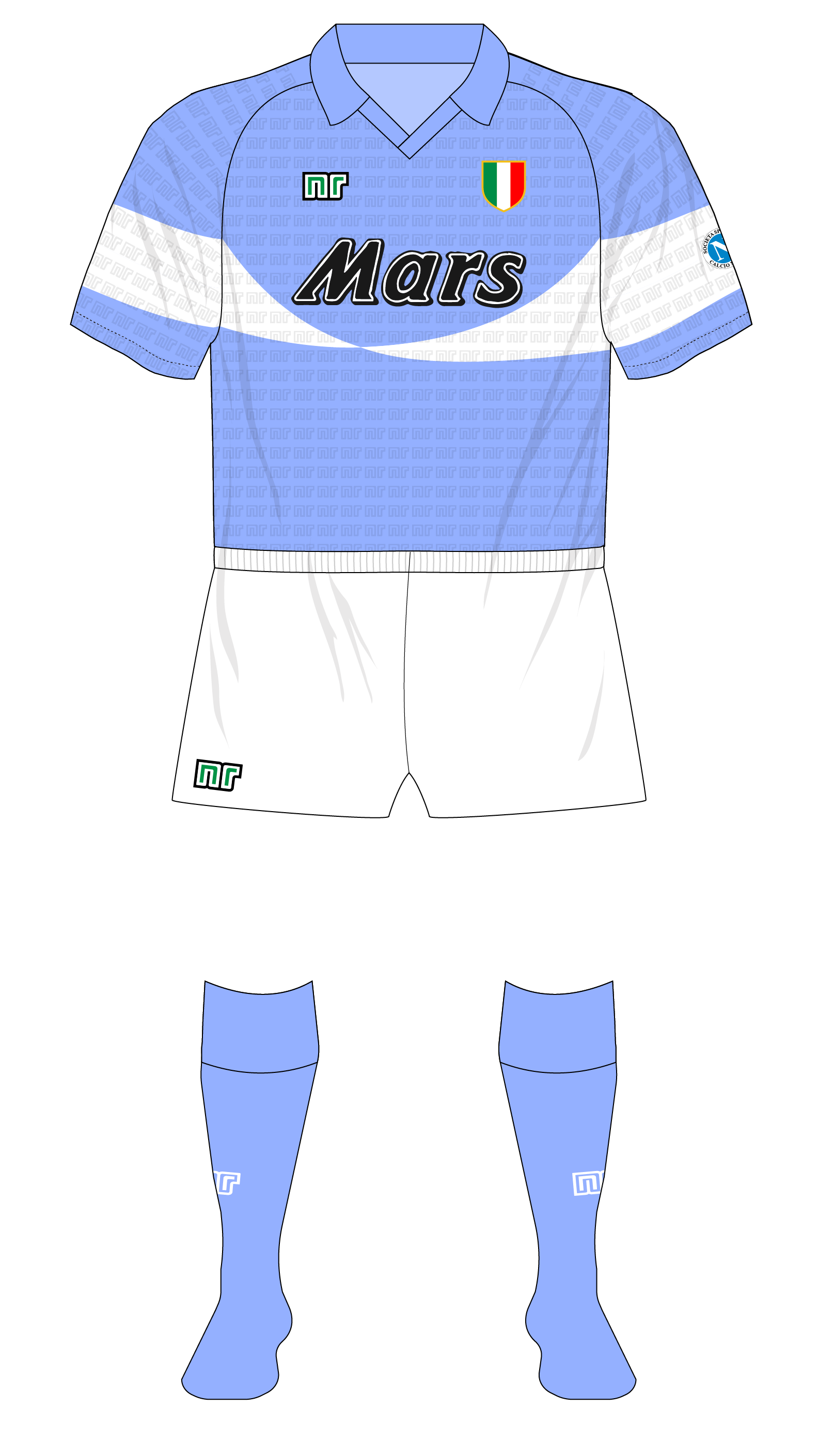
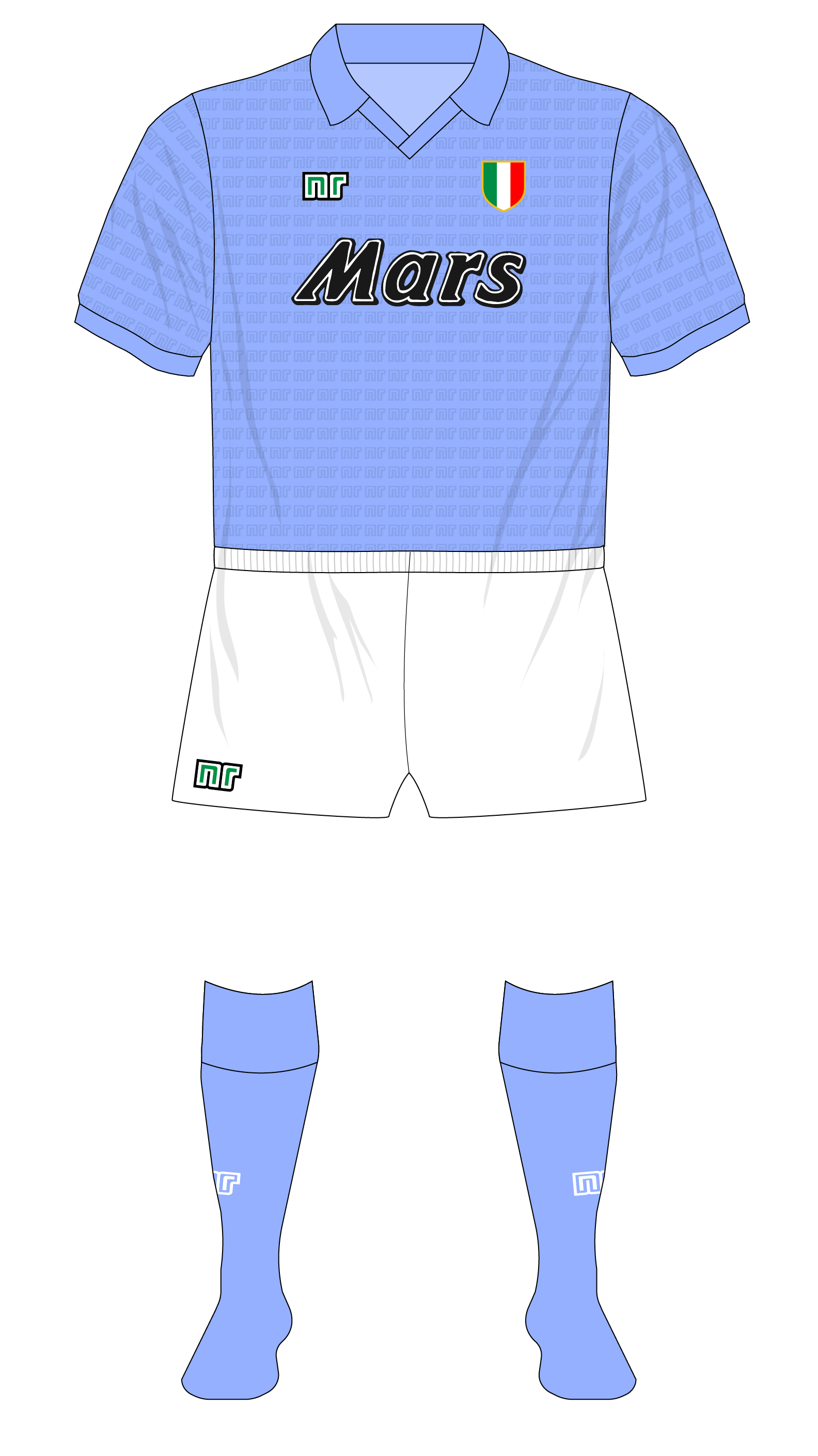
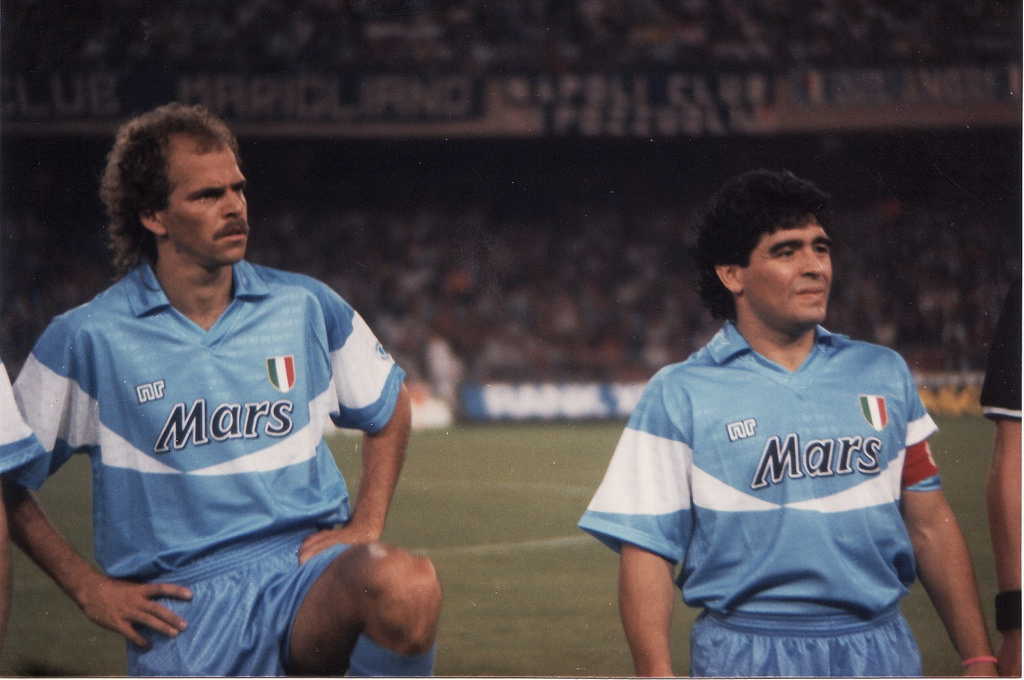
FC Barcelona (1992-94)
Three years on and Barcelona would dip their toe in the European kit waters, though not without some rules-related problems. They had joined with Kappa in 1992 and wore their new kit in all games in that first season (below left) but 1993-94 saw the launch of a special shirt for the Champions League (below centre).
It was worn as they reached the final, losing 4-0 to Milan, and the following season Uefa would have stricter rules on logos, meaning that the extra Kappa markings on the sleeves and shorts and in the fabric had to be deleted (below right).
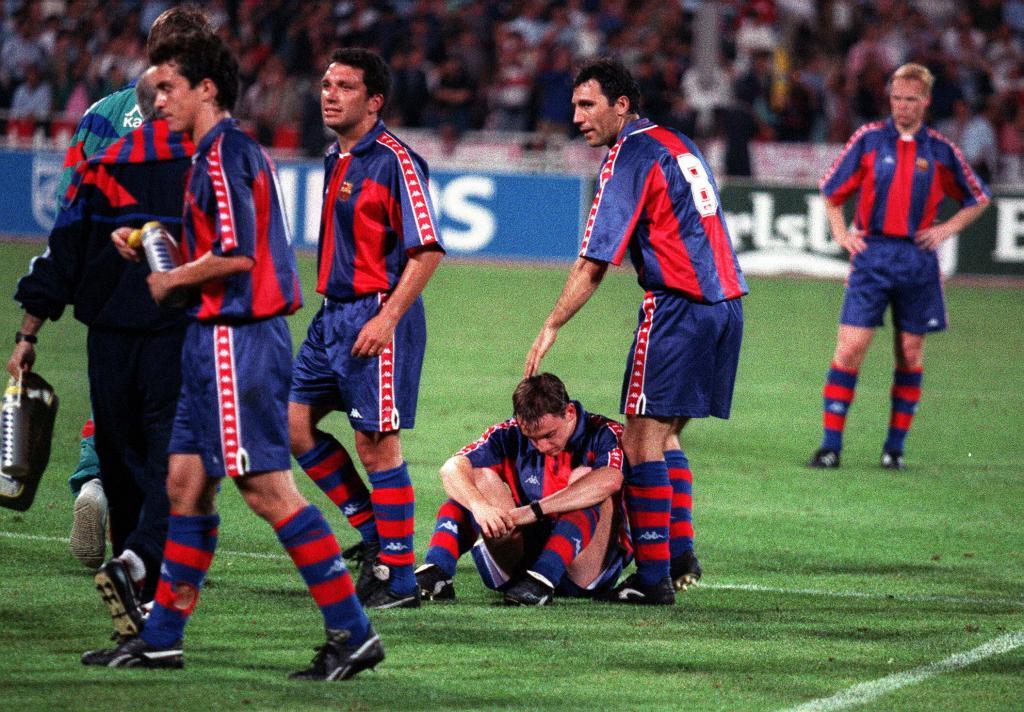
Dortmund (1996-97)
While the sample size was admittedly small, ultimate success was continuing to elude sides in special European kits but Borussia Dortmund would put that right in 1996-97.
Along with Paris Saint-Germain, Dortmund spearheaded Nike’s early impact in European football and they wore some interesting and unusual designs in the early 1990s, including abstract patterns and diagonal numbers on the back.
The new shirt for 1996 was more conventional, but it was joined by a design featuring black stripes and sleeves and the stripped back Die Continentale logo to satisfy sponsorship regulations. Dortmund made it to the final as they beat Manchester United in the semis but, having got to the decider in their European shirt, they premiered the 1997-98 offering as they beat Juventus 3-1 in Munich.
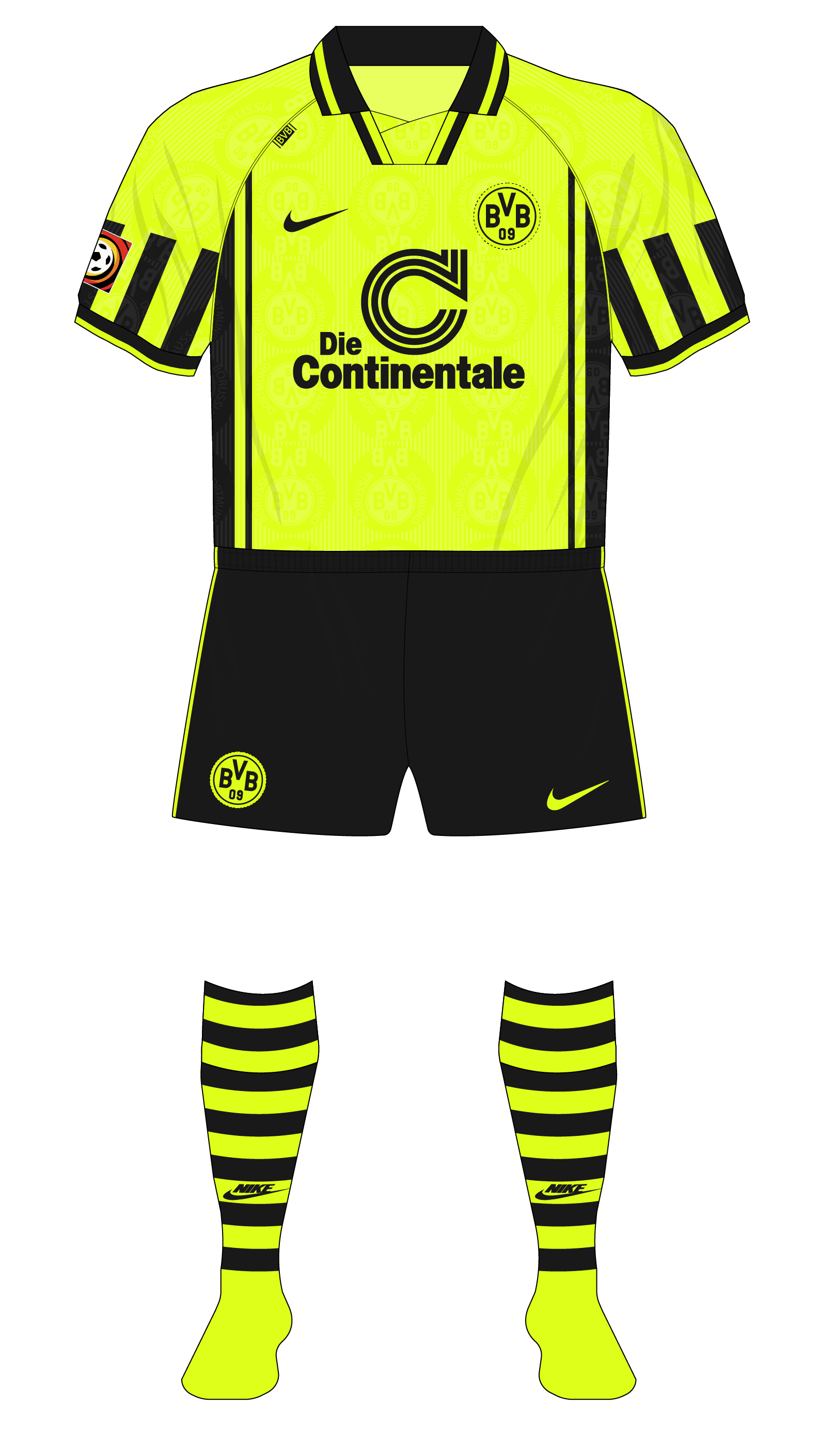
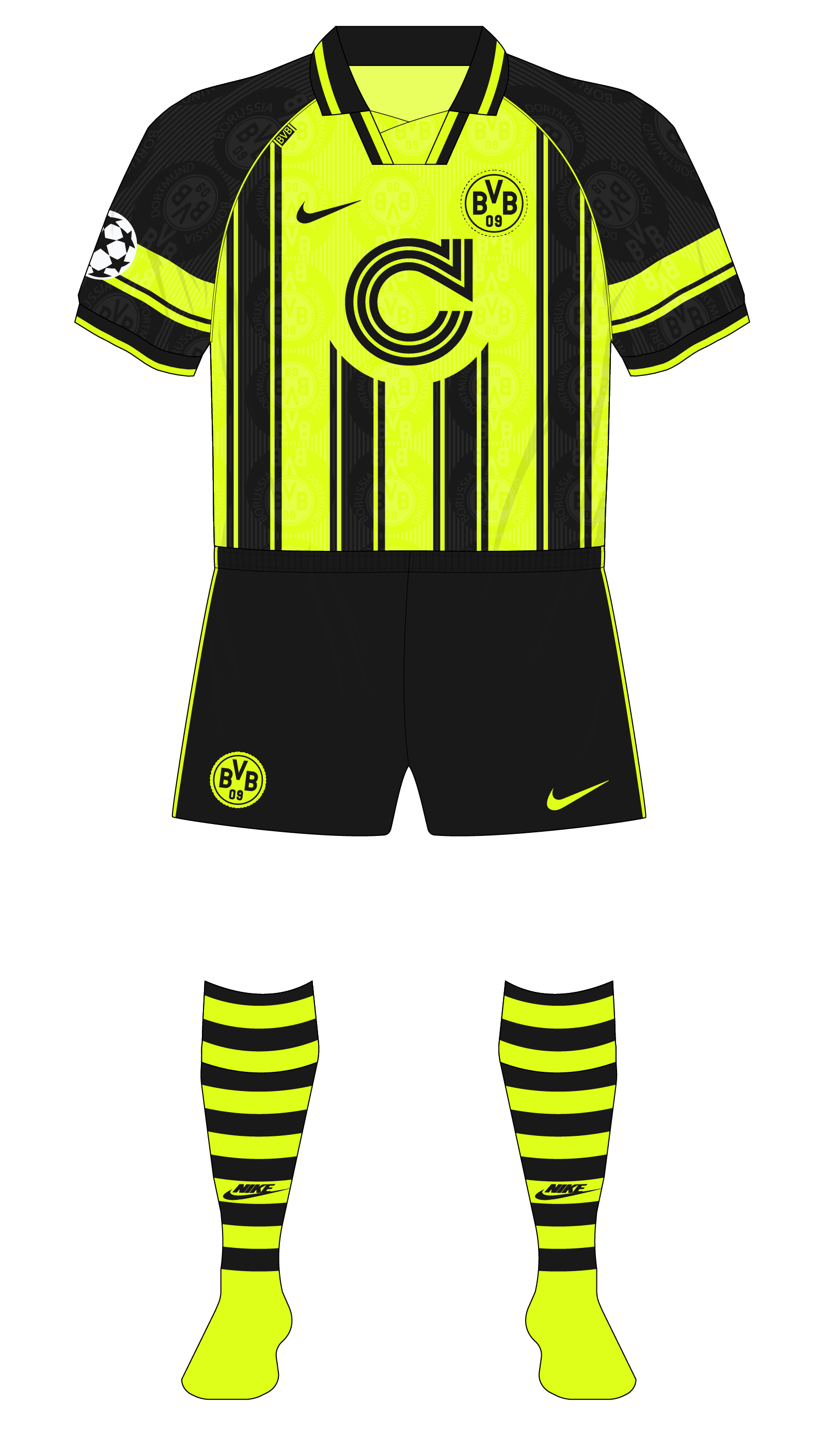
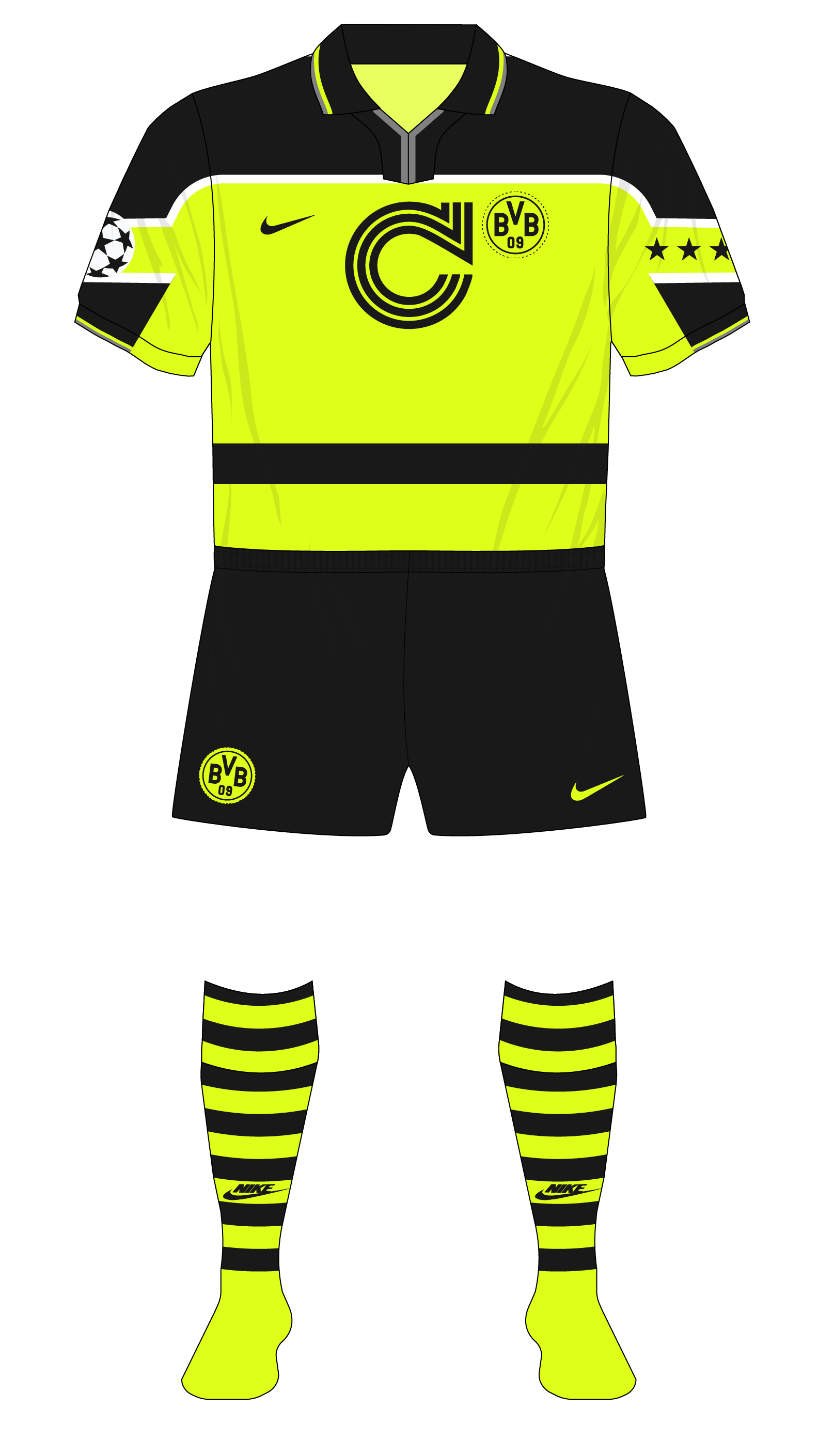
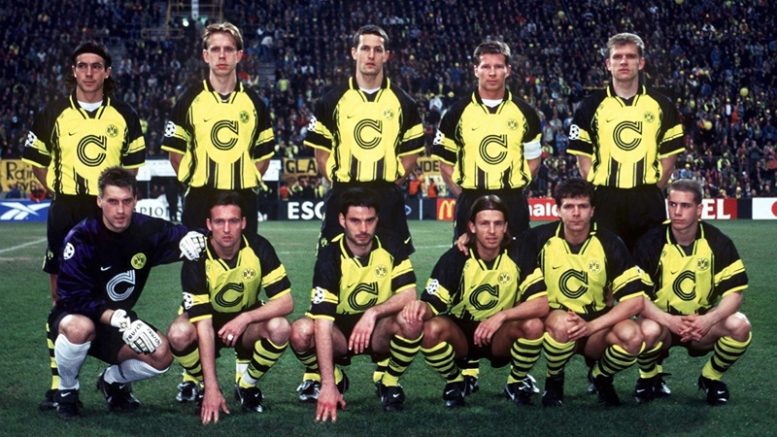
Manchester United (1997-00)
Perhaps it was the experience of losing to Dortmund and seeing them claim the cup with the big ears that convinced Manchester United that they needed to join the party – or perhaps not. In any case, they had a European shirt for 1997-98.
The most notable visual difference was the addition of white socks – Alex Ferguson was convinced by vision specialist Gail Stevenson that they aided players’ ability pick out team-mates under floodlights.
It would take three seasons but this was the strip United wore as they beat Bayern Munich in Barcelona in the final in 1999.
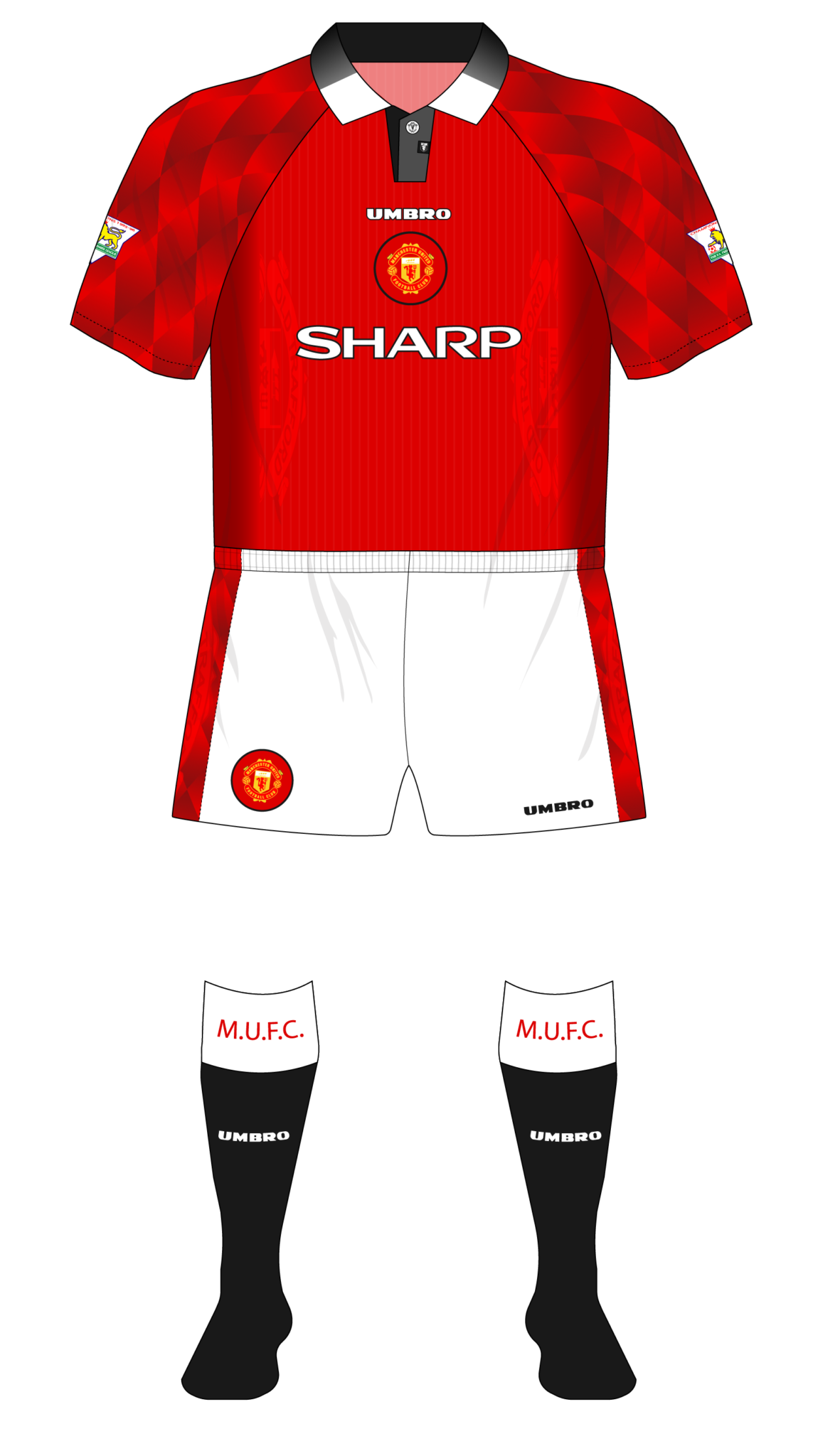
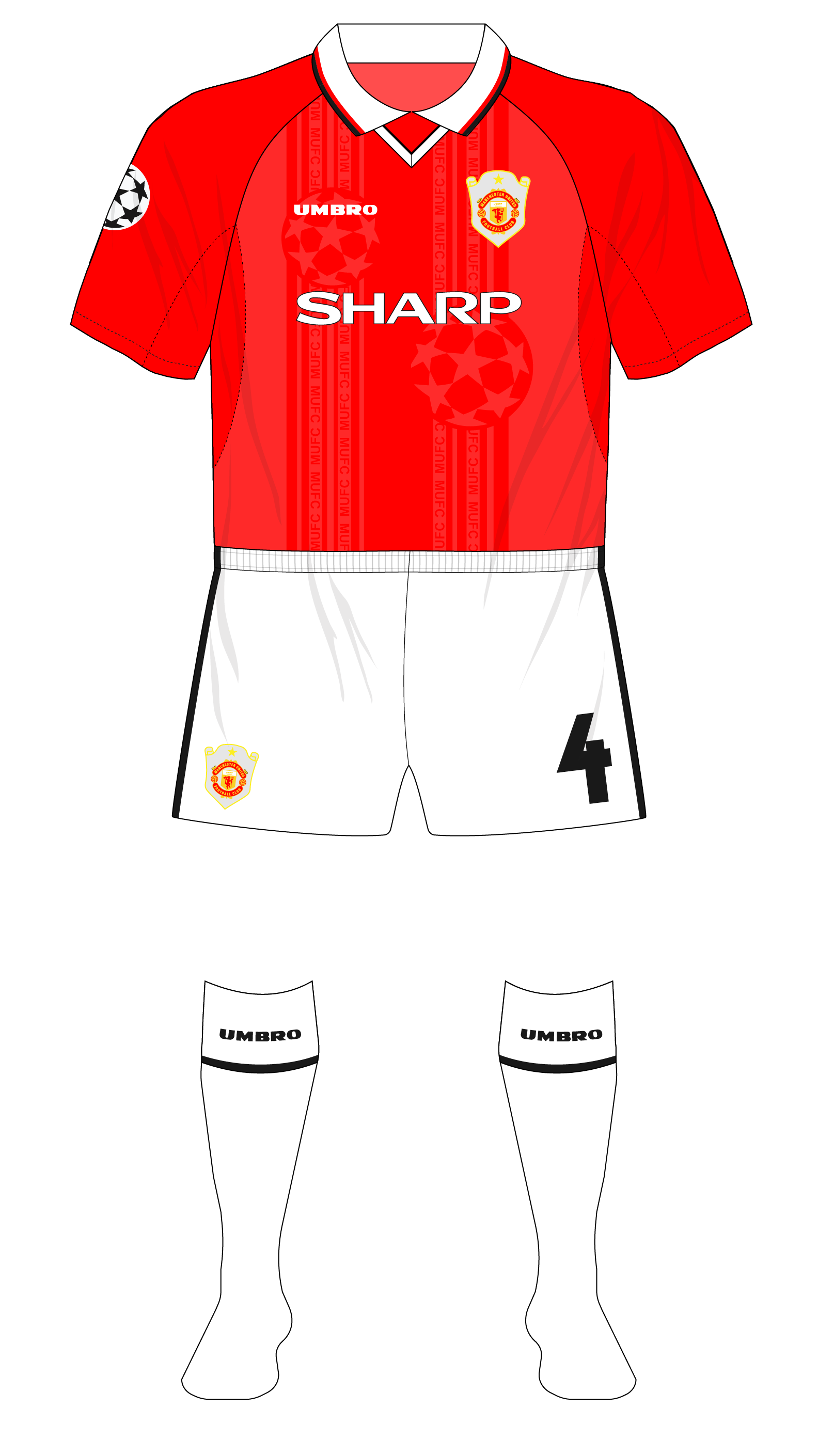
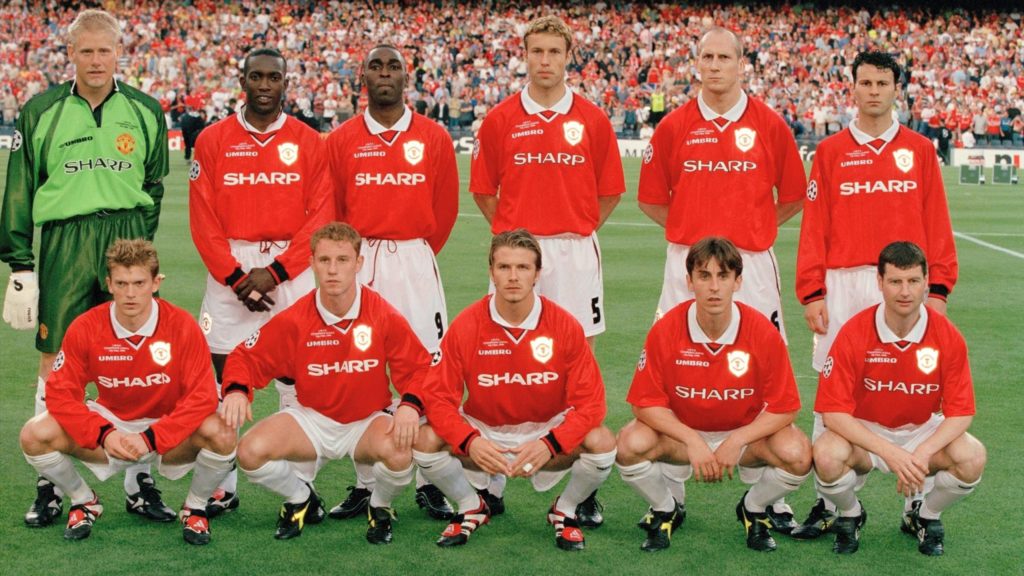
FC Barcelona 1997-98
Having stuck with the same strip for domestic and European games – albeit with the Kappa sleeves logos removed – in 1995-96 and 1996-97, Barcelona again went with a European strip in 1997-98 and also decided to have a special away for the Champions League.
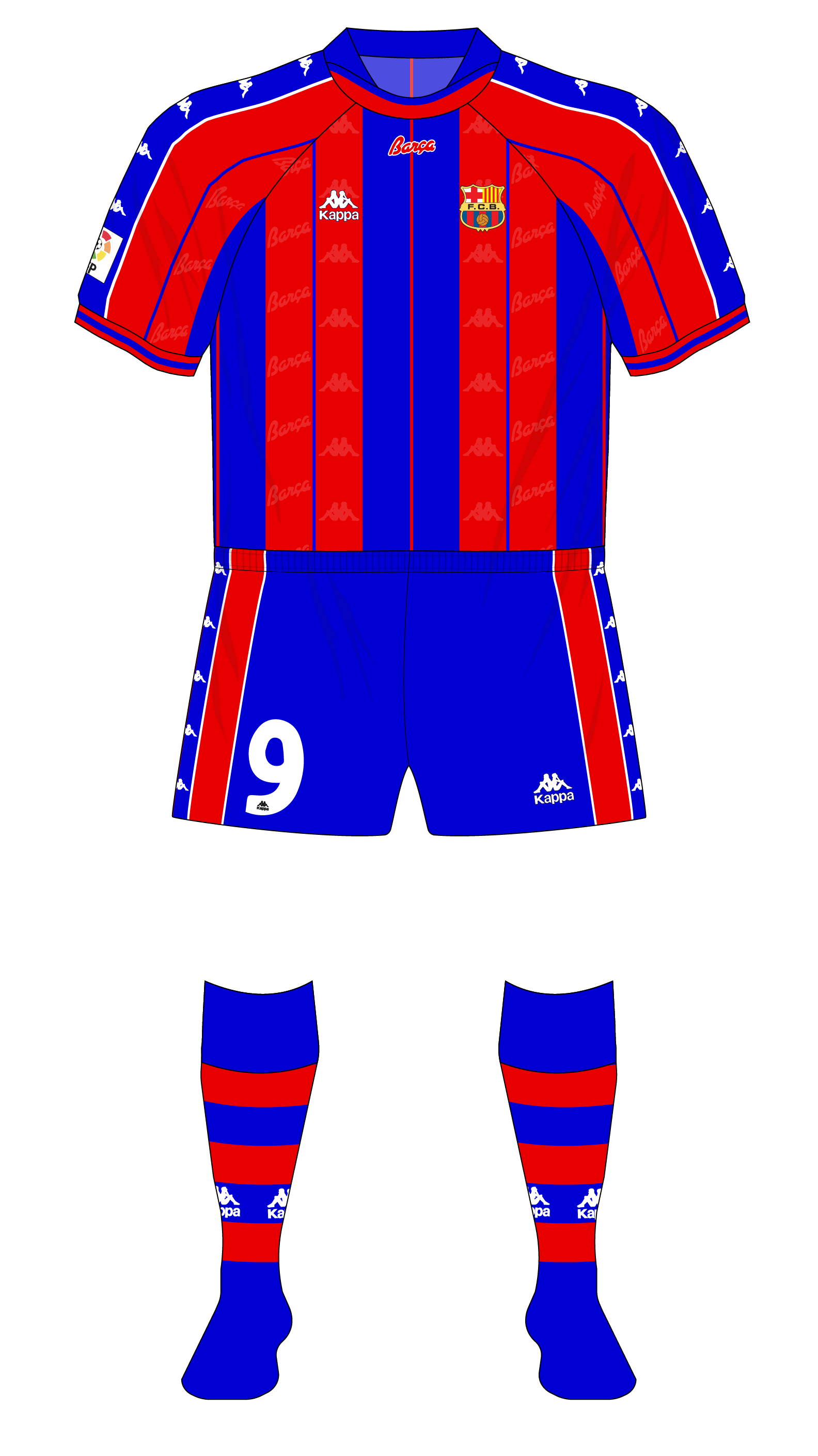
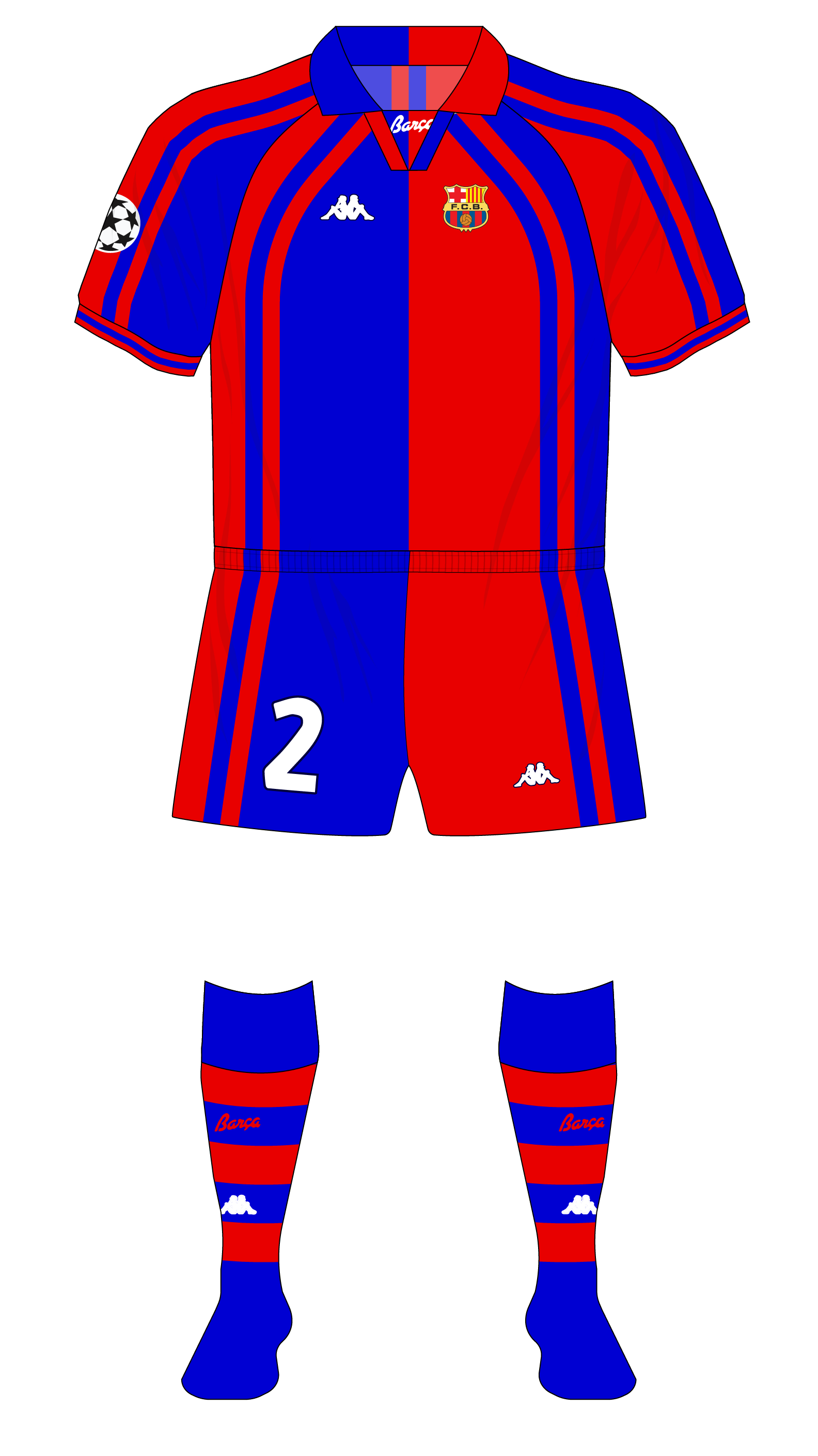
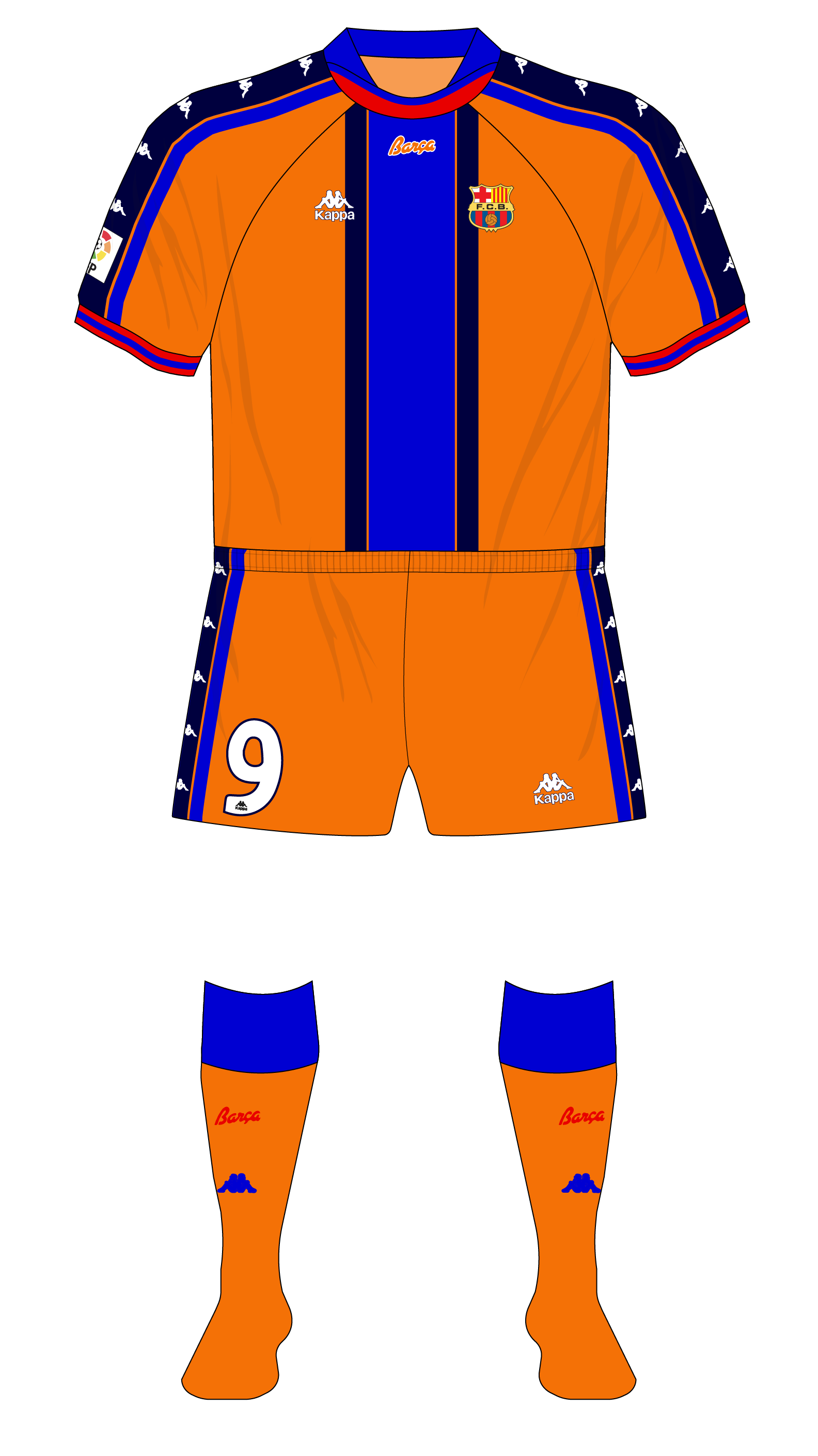
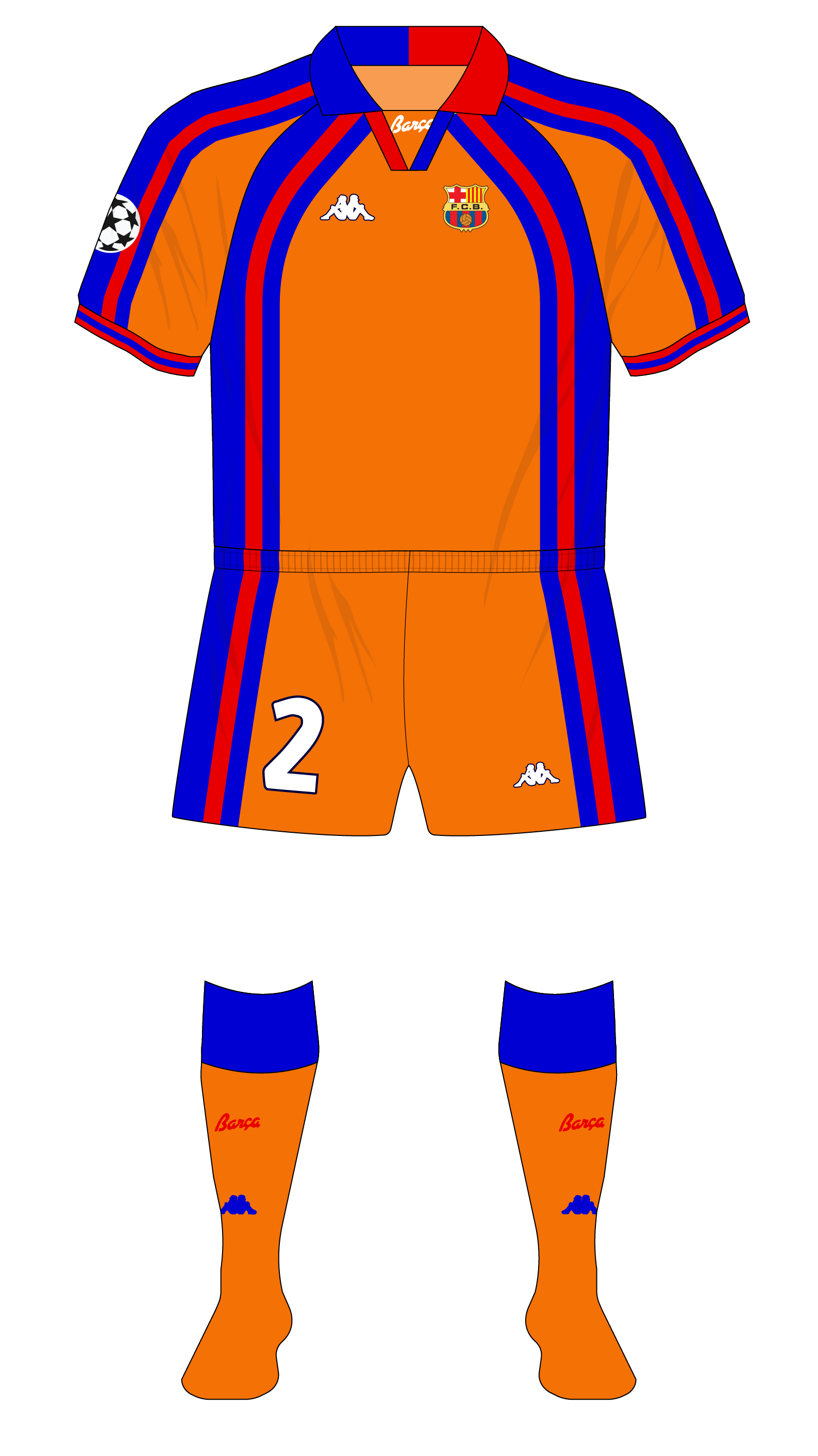
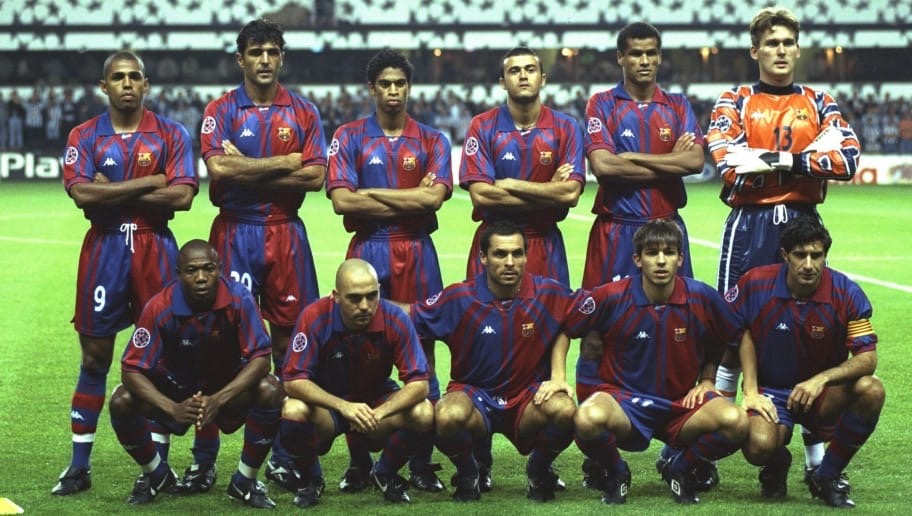
Ajax (1998-99)
Ajax had a new Umbro home strip almost every season during the 1990s – they even wore their 1997-98 home in losing to Juventus in the 1996-97 semi-finals – though often it was difficult to tell the difference from year to year.
For 1998-99, they opted to go down the Euro kit route, with the Champions League logo repeated throughout the fabric of the new kit.
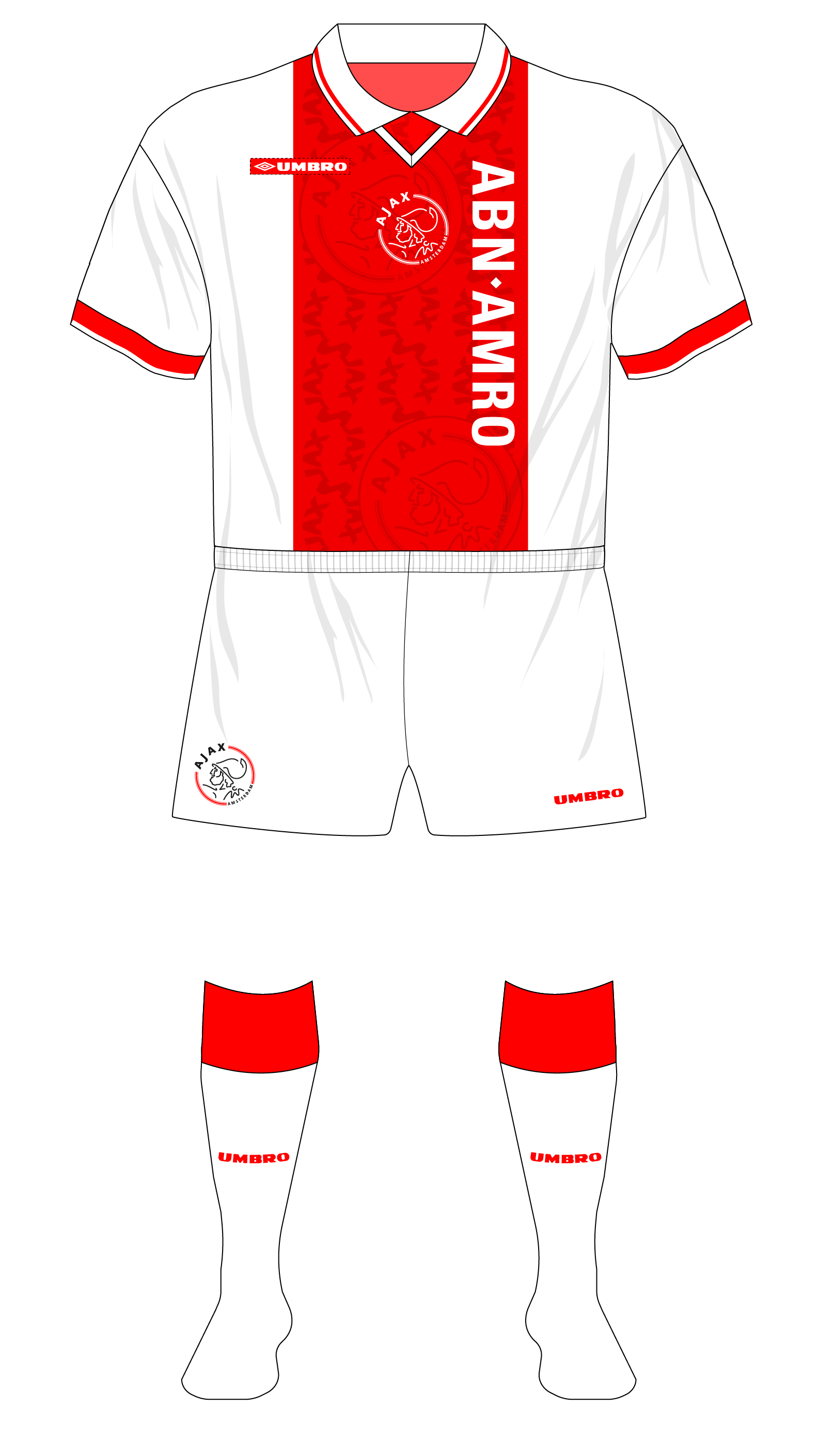
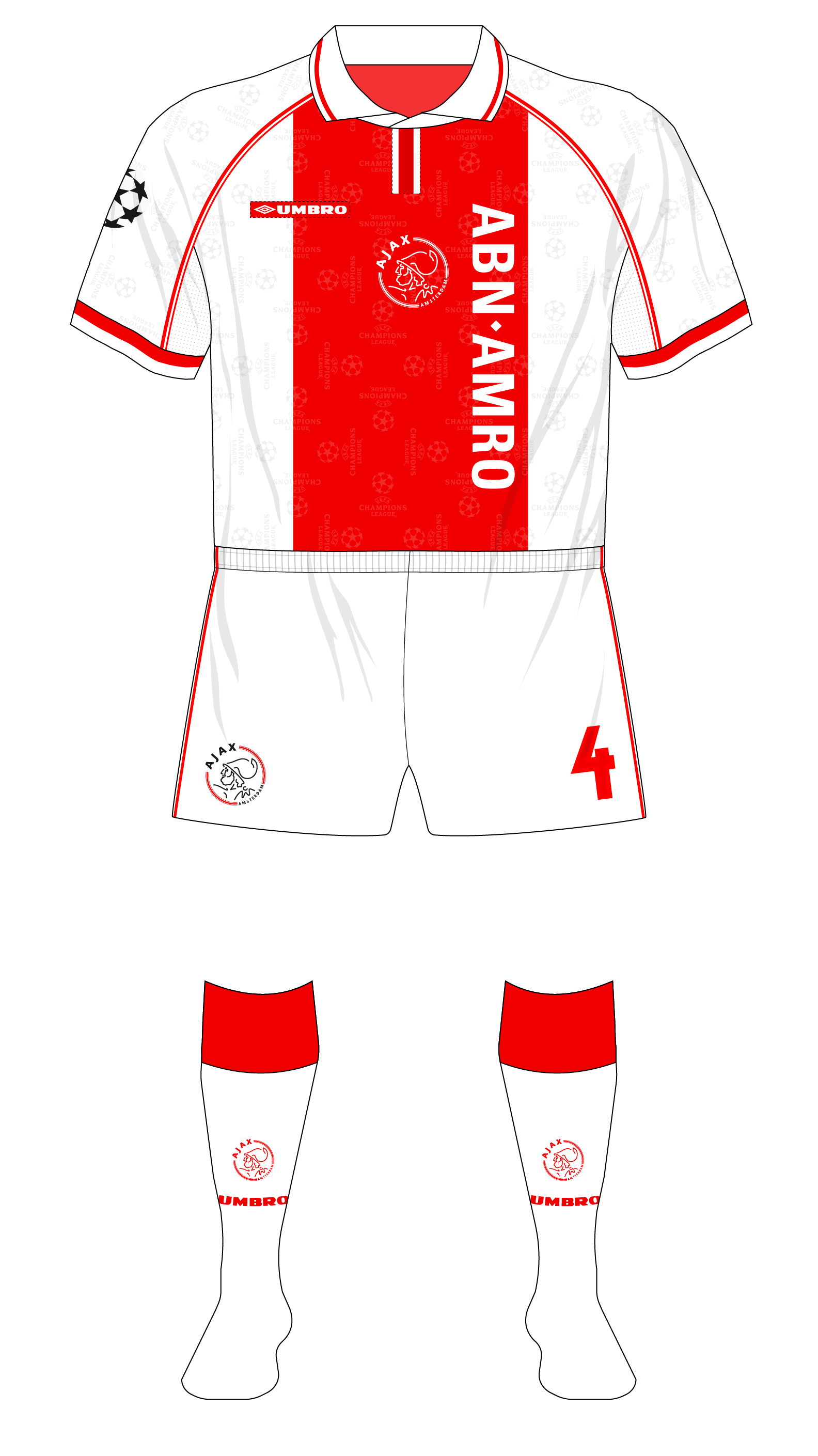
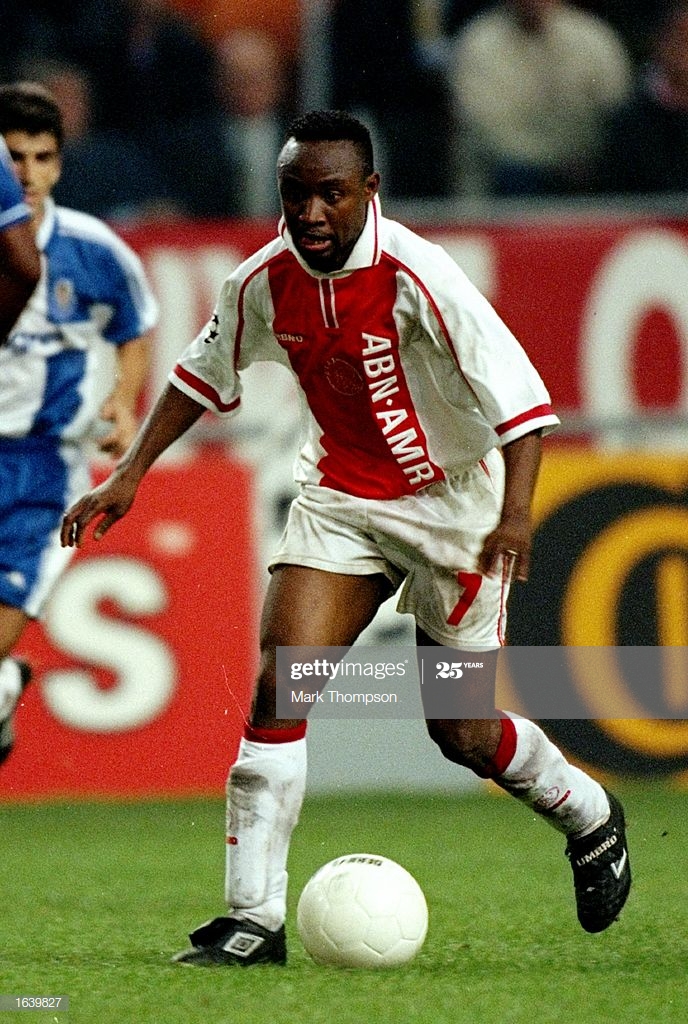
Real Madrid (1999)
The season also provided an unusual example of a team having a European away kit while keeping the same home for all competitions.
Real Madrid were back in adidas for the first time in a decade in a half and they had two separate navy change kits – as well as a navy goalkeeper shirt which was similar to the domestic away.
We wouldn’t put it past Uefa to have decided that the default away had too much white to be a viable alternative to the home but, whatever the reason, they wore a gold-trimmed kit in losing to Dynamo Kiev in the quarter-finals of that season’s competition.
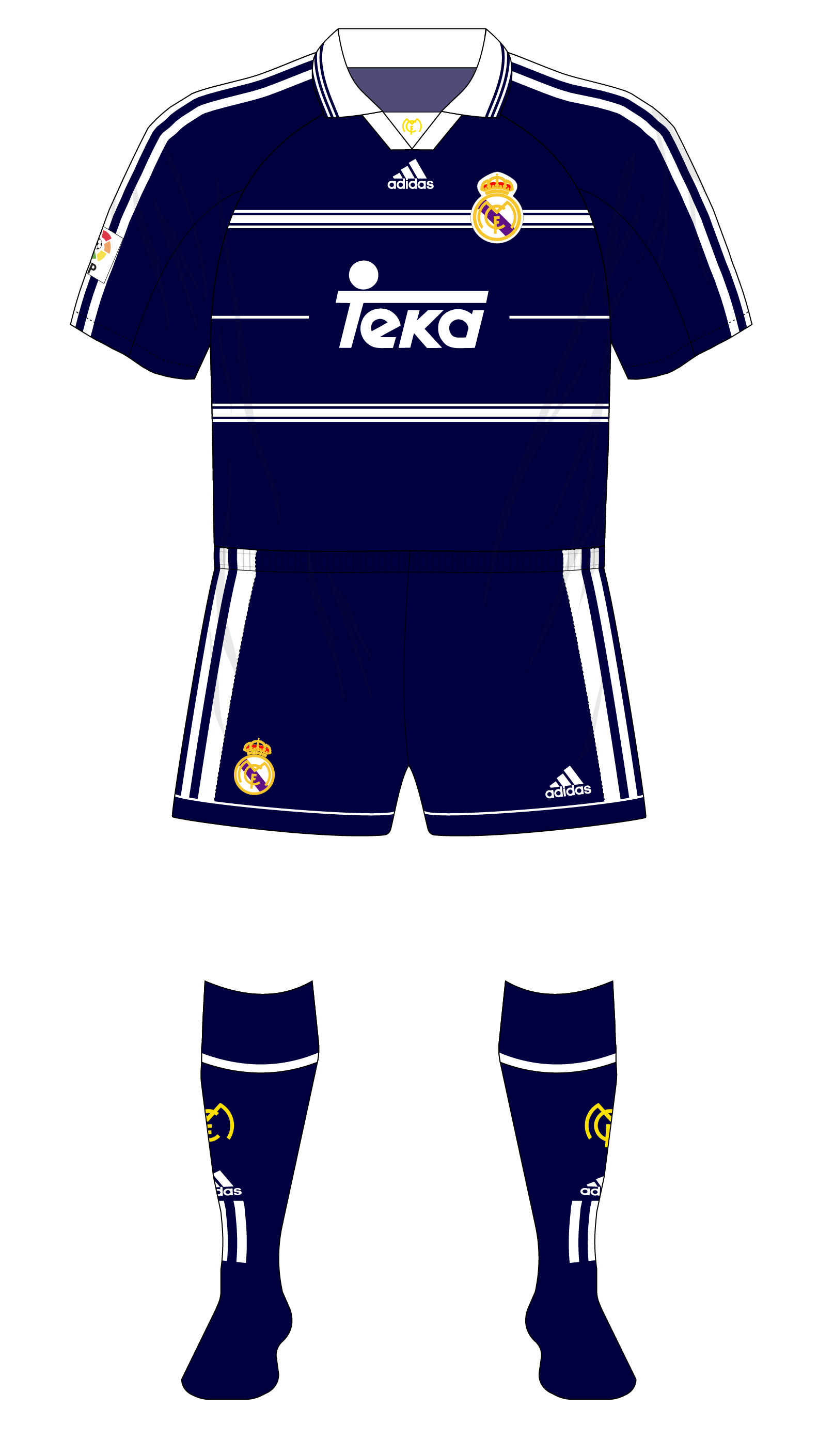
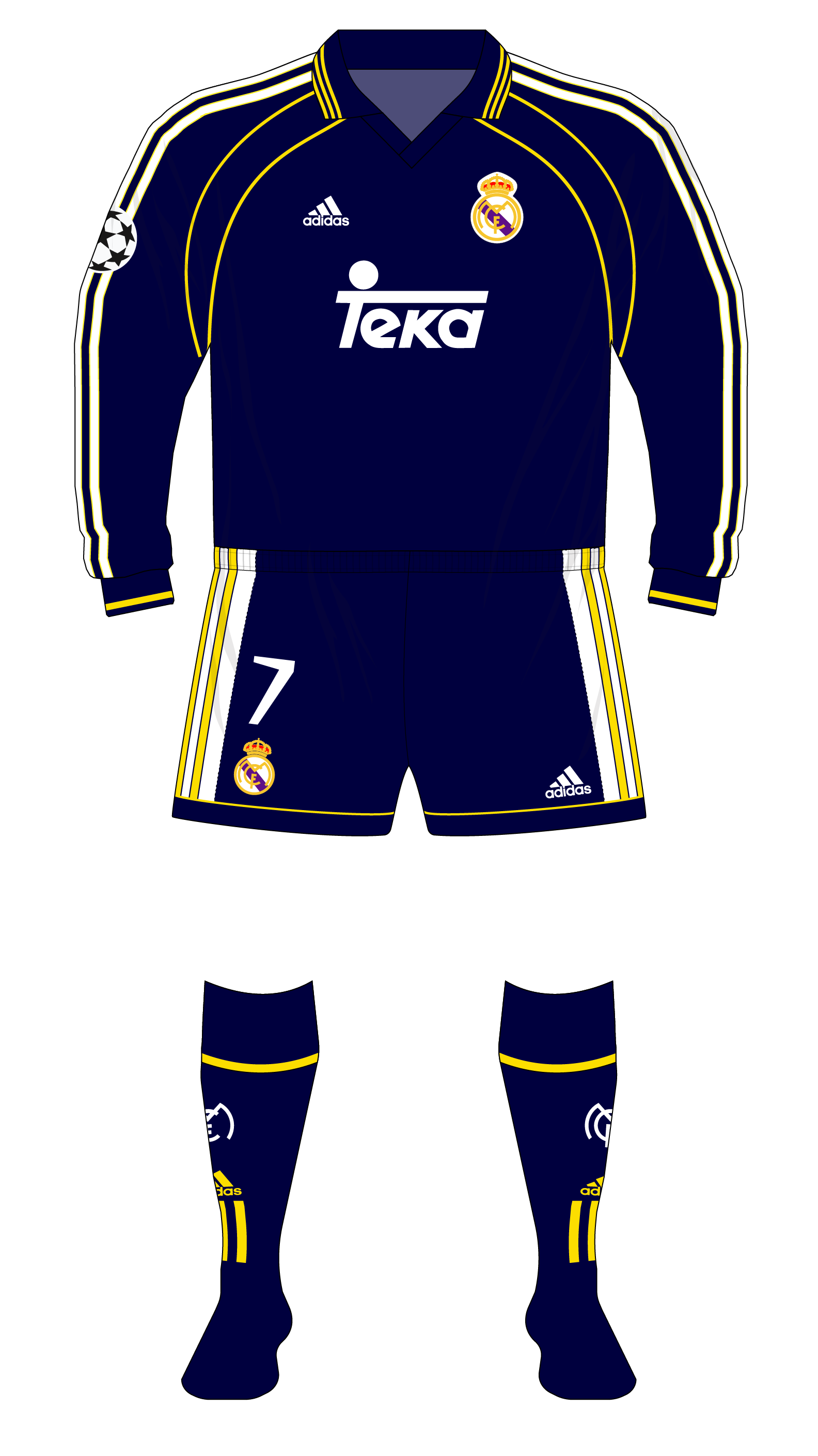
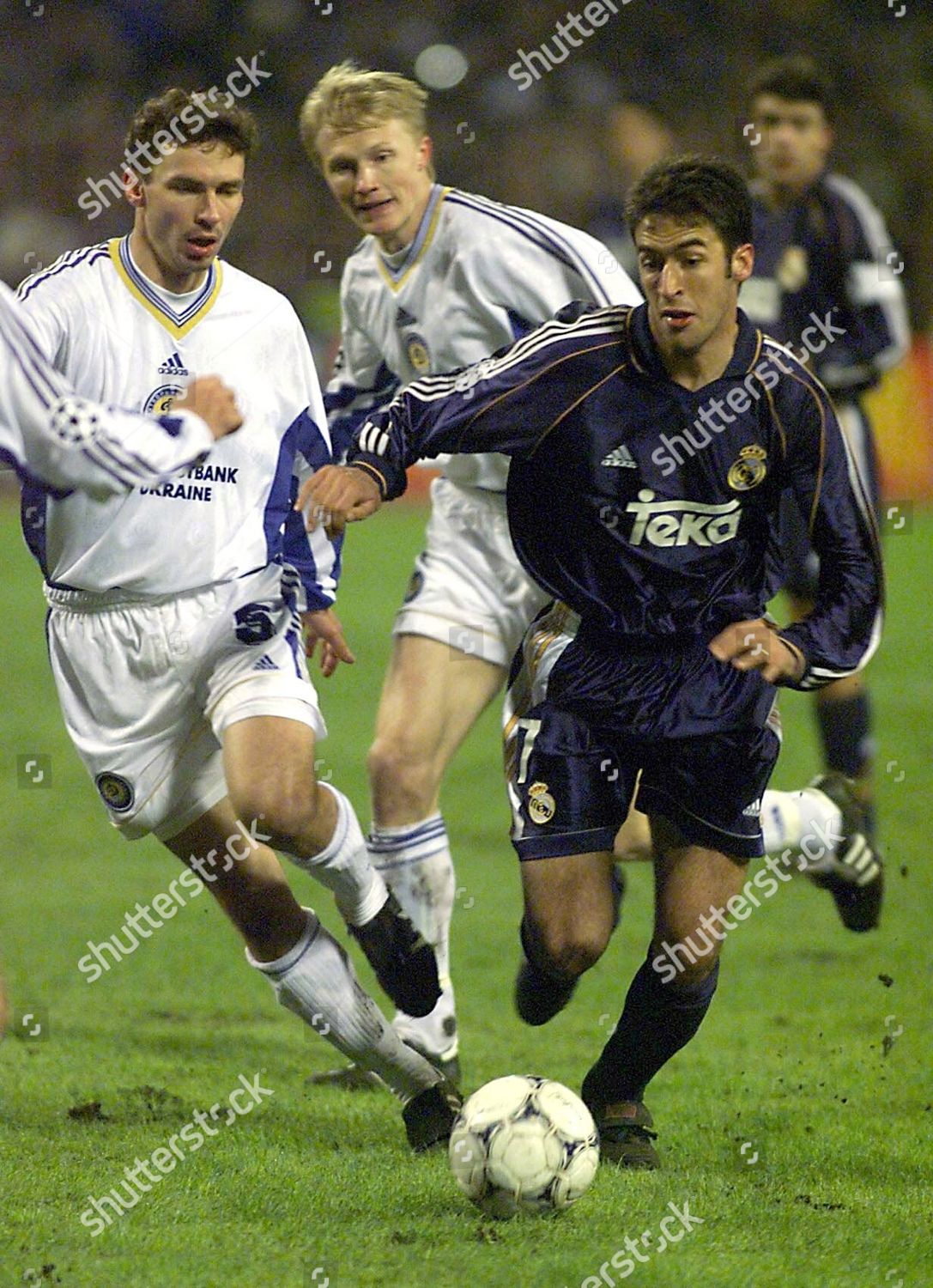
This blog was written by Museum of Jerseys. Please visit their website to read more interesting articles!


